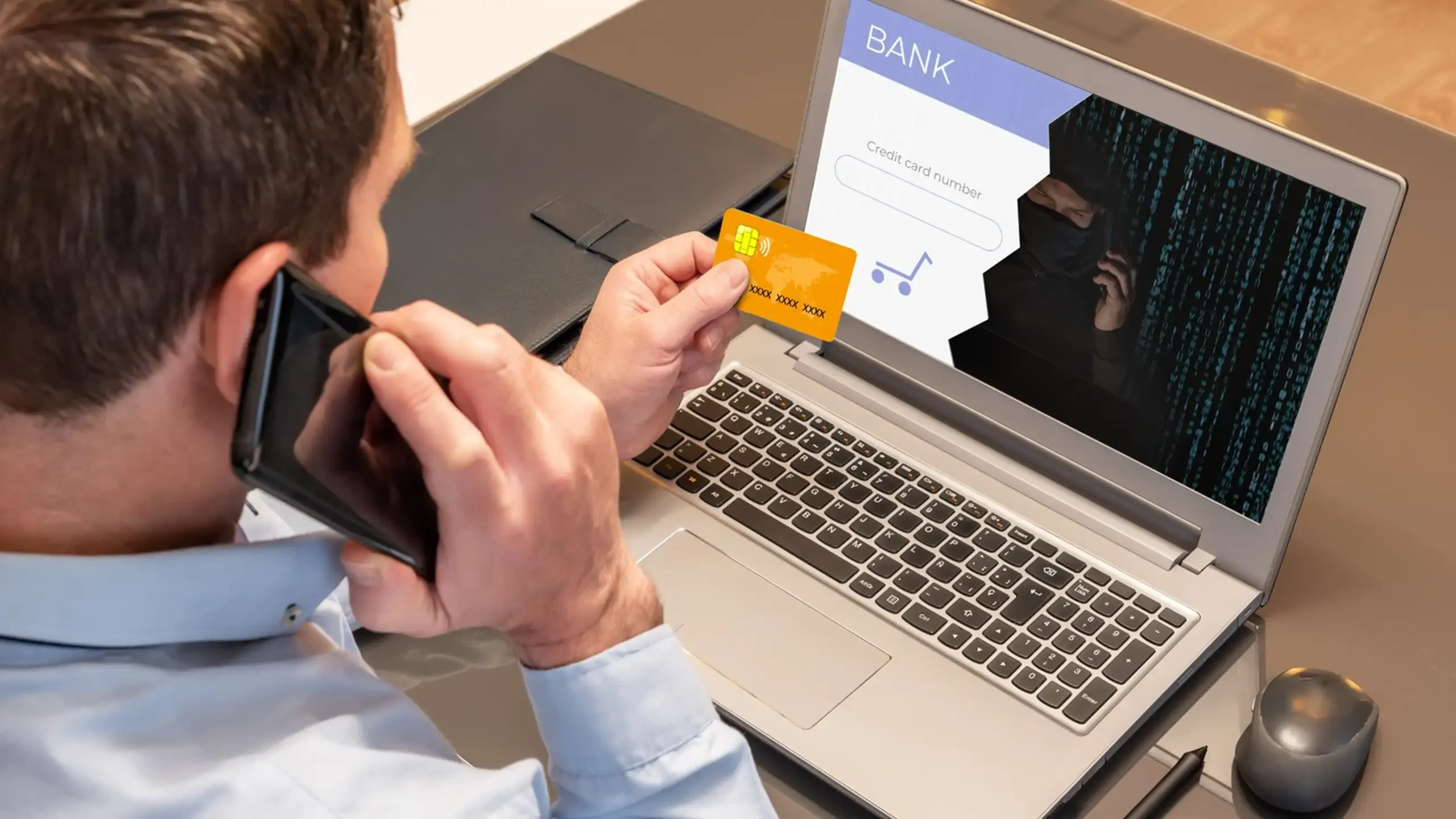Over 8M patient records leaked in healthcare data breach
Published
June 15, 2025 10:00am EDT close IPhone users instructed to take immediate action to avoid data breach: 'Urgent threat' Kurt 'The CyberGuy' Knutsson discusses Elon Musk's possible priorities as he exits his role with the White House and explains the urgent warning for iPhone users to update devices after a 'massive security gap.' NEWYou can now listen to Fox News articles!
In the past decade, healthcare data has become one of the most sought-after targets in cybercrime. From insurers to clinics, every player in the ecosystem handles some form of sensitive information. However, breaches do not always originate from hospitals or health apps. Increasingly, patient data is managed by third-party vendors offering digital services such as scheduling, billing and marketing. One such breach at a digital marketing agency serving dental practices recently exposed approximately 2.7 million patient profiles and more than 8.8 million appointment records.Sign up for my FREE CyberGuy ReportGet my best tech tips, urgent security alerts, and exclusive deals delivered straight to your inbox. Plus, you’ll get instant access to my Ultimate Scam Survival Guide — free when you join. Illustration of a hacker at work Massive healthcare data leak exposes millions: What you need to knowCybernews researchers have discovered a misconfigured MongoDB database exposing 2.7 million patient profiles and 8.8 million appointment records. The database was publicly accessible online, unprotected by passwords or authentication protocols. Anyone with basic knowledge of database scanning tools could have accessed it.The exposed data included names, birthdates, addresses, emails, phone numbers, gender, chart IDs, language preferences and billing classifications. Appointment records also contained metadata such as timestamps and institutional identifiers.MASSIVE DATA BREACH EXPOSES 184 MILLION PASSWORDS AND LOGINSClues within the data structure point toward Gargle, a Utah-based company that builds websites and offers marketing tools for dental practices. While not a confirmed source, several internal references and system details suggest a strong connection. Gargle provides appointment scheduling, form submission and patient communication services. These functions require access to patient information, making the firm a likely link in the exposure.After the issue was reported, the database was secured. The duration of the exposure remains unknown, and there is no public evidence indicating whether the data was downloaded by malicious actors before being locked down.We reached out to Gargle for a comment but did not hear back before our deadline. A healthcare professional viewing heath data How healthcare data breaches lead to identity theft and insurance fraudThe exposed data presents a broad risk profile. On its own, a phone number or billing record might seem limited in scope. Combined, however, the dataset forms a complete profile that could be exploited for identity theft, insurance fraud and targeted phishing campaigns.Medical identity theft allows attackers to impersonate patients and access services under a false identity. Victims often remain unaware until significant damage is done, ranging from incorrect medical records to unpaid bills in their names. The leak also opens the door to insurance fraud, with actors using institutional references and chart data to submit false claims.This type of breach raises questions about compliance with the Health Insurance Portability and Accountability Act, which mandates strong security protections for entities handling patient data. Although Gargle is not a healthcare provider, its access to patient-facing infrastructure could place it under the scope of that regulation as a business associate. A healthcare professional working on a laptop 5 ways you can stay safe from healthcare data breachesIf your information was part of the healthcare breach or any similar one, it’s worth taking a few steps to protect yourself.1. Consider identity theft protection services: Since the healthcare data breach exposed personal and financial information, it’s crucial to stay proactive against identity theft. Identity theft protection services offer continuous monitoring of your credit reports, Social Security number and even the dark web to detect if your information is being misused. These services send you real-time alerts about suspicious activity, such as new credit inquiries or attempts to open accounts in your name, helping you act quickly before serious damage occurs. Beyond monitoring, many identity theft protection companies provide dedicated recovery specialists who assist you in resolving fraud issues, disputing unauthorized charges and restoring your identity if it’s compromised. See my tips and best picks on how to protect yourself from identity theft.2. Use personal data removal services: The healthcare data breach leaks loads of information about you, and all this could end up in the public domain, which essentially gives anyone an opportunity to scam you. One proactive step is to consider personal data removal services, which specialize in continuously monitoring and removing your information from various online databases and websites. While no service promises to remove all your data from the internet, having a removal service is great if you want to constantly monitor and automate the process of removing your information from hundreds of sites continuously over a longer period of time. Check out my top picks for data removal services here. GET FOX BUSINESS ON THE GO BY CLICKING HEREGet a free scan to find out if your personal information is already out on the web3. Have strong antivirus software: Hackers have people’s email addresses and full names, which makes it easy for them to send you a phishing link that installs malware and steals all your data. These messages are socially engineered to catch them, and catching them is nearly impossible if you’re not careful. However, you’re not without defenses.The best way to safeguard yourself from malicious links that install malware, potentially accessing your private information, is to have strong antivirus software installed on all your devices. This protection can also alert you to phishing emails and ransomware scams, keeping your personal information and digital assets safe. Get my picks for the best 2025 antivirus protection winners for your Windows, Mac, Android and iOS devices.4. Enable two-factor authentication: While passwords weren’t part of the data breach, you still need to enable two-factor authentication. It gives you an extra layer of security on all your important accounts, including email, banking and social media. 2FA requires you to provide a second piece of information, such as a code sent to your phone, in addition to your password when logging in. This makes it significantly harder for hackers to access your accounts, even if they have your password. Enabling 2FA can greatly reduce the risk of unauthorized access and protect your sensitive data.5. Be wary of mailbox communications: Bad actors may also try to scam you through snail mail. The data leak gives them access to your address. They may impersonate people or brands you know and use themes that require urgent attention, such as missed deliveries, account suspensions and security alerts. Kurt’s key takeawayIf nothing else, this latest leak shows just how poorly patient data is being handled today. More and more, non-medical vendors are getting access to sensitive information without facing the same rules or oversight as hospitals and clinics. These third-party services are now a regular part of how patients book appointments, pay bills or fill out forms. But when something goes wrong, the fallout is just as serious. Even though the database was taken offline, the bigger problem hasn't gone away. Your data is only as safe as the least careful company that gets access to it.CLICK HERE TO GET THE FOX NEWS APPDo you think healthcare companies are investing enough in their cybersecurity infrastructure? Let us know by writing us at Cyberguy.com/ContactFor more of my tech tips and security alerts, subscribe to my free CyberGuy Report Newsletter by heading to Cyberguy.com/NewsletterAsk Kurt a question or let us know what stories you'd like us to coverFollow Kurt on his social channelsAnswers to the most asked CyberGuy questions:New from Kurt:Copyright 2025 CyberGuy.com. All rights reserved. Kurt "CyberGuy" Knutsson is an award-winning tech journalist who has a deep love of technology, gear and gadgets that make life better with his contributions for Fox News & FOX Business beginning mornings on "FOX & Friends." Got a tech question? Get Kurt’s free CyberGuy Newsletter, share your voice, a story idea or comment at CyberGuy.com.
#over #patient #records #leaked #healthcareOver 8M patient records leaked in healthcare data breach
Published
June 15, 2025 10:00am EDT close IPhone users instructed to take immediate action to avoid data breach: 'Urgent threat' Kurt 'The CyberGuy' Knutsson discusses Elon Musk's possible priorities as he exits his role with the White House and explains the urgent warning for iPhone users to update devices after a 'massive security gap.' NEWYou can now listen to Fox News articles!
In the past decade, healthcare data has become one of the most sought-after targets in cybercrime. From insurers to clinics, every player in the ecosystem handles some form of sensitive information. However, breaches do not always originate from hospitals or health apps. Increasingly, patient data is managed by third-party vendors offering digital services such as scheduling, billing and marketing. One such breach at a digital marketing agency serving dental practices recently exposed approximately 2.7 million patient profiles and more than 8.8 million appointment records.Sign up for my FREE CyberGuy ReportGet my best tech tips, urgent security alerts, and exclusive deals delivered straight to your inbox. Plus, you’ll get instant access to my Ultimate Scam Survival Guide — free when you join. Illustration of a hacker at work Massive healthcare data leak exposes millions: What you need to knowCybernews researchers have discovered a misconfigured MongoDB database exposing 2.7 million patient profiles and 8.8 million appointment records. The database was publicly accessible online, unprotected by passwords or authentication protocols. Anyone with basic knowledge of database scanning tools could have accessed it.The exposed data included names, birthdates, addresses, emails, phone numbers, gender, chart IDs, language preferences and billing classifications. Appointment records also contained metadata such as timestamps and institutional identifiers.MASSIVE DATA BREACH EXPOSES 184 MILLION PASSWORDS AND LOGINSClues within the data structure point toward Gargle, a Utah-based company that builds websites and offers marketing tools for dental practices. While not a confirmed source, several internal references and system details suggest a strong connection. Gargle provides appointment scheduling, form submission and patient communication services. These functions require access to patient information, making the firm a likely link in the exposure.After the issue was reported, the database was secured. The duration of the exposure remains unknown, and there is no public evidence indicating whether the data was downloaded by malicious actors before being locked down.We reached out to Gargle for a comment but did not hear back before our deadline. A healthcare professional viewing heath data How healthcare data breaches lead to identity theft and insurance fraudThe exposed data presents a broad risk profile. On its own, a phone number or billing record might seem limited in scope. Combined, however, the dataset forms a complete profile that could be exploited for identity theft, insurance fraud and targeted phishing campaigns.Medical identity theft allows attackers to impersonate patients and access services under a false identity. Victims often remain unaware until significant damage is done, ranging from incorrect medical records to unpaid bills in their names. The leak also opens the door to insurance fraud, with actors using institutional references and chart data to submit false claims.This type of breach raises questions about compliance with the Health Insurance Portability and Accountability Act, which mandates strong security protections for entities handling patient data. Although Gargle is not a healthcare provider, its access to patient-facing infrastructure could place it under the scope of that regulation as a business associate. A healthcare professional working on a laptop 5 ways you can stay safe from healthcare data breachesIf your information was part of the healthcare breach or any similar one, it’s worth taking a few steps to protect yourself.1. Consider identity theft protection services: Since the healthcare data breach exposed personal and financial information, it’s crucial to stay proactive against identity theft. Identity theft protection services offer continuous monitoring of your credit reports, Social Security number and even the dark web to detect if your information is being misused. These services send you real-time alerts about suspicious activity, such as new credit inquiries or attempts to open accounts in your name, helping you act quickly before serious damage occurs. Beyond monitoring, many identity theft protection companies provide dedicated recovery specialists who assist you in resolving fraud issues, disputing unauthorized charges and restoring your identity if it’s compromised. See my tips and best picks on how to protect yourself from identity theft.2. Use personal data removal services: The healthcare data breach leaks loads of information about you, and all this could end up in the public domain, which essentially gives anyone an opportunity to scam you. One proactive step is to consider personal data removal services, which specialize in continuously monitoring and removing your information from various online databases and websites. While no service promises to remove all your data from the internet, having a removal service is great if you want to constantly monitor and automate the process of removing your information from hundreds of sites continuously over a longer period of time. Check out my top picks for data removal services here. GET FOX BUSINESS ON THE GO BY CLICKING HEREGet a free scan to find out if your personal information is already out on the web3. Have strong antivirus software: Hackers have people’s email addresses and full names, which makes it easy for them to send you a phishing link that installs malware and steals all your data. These messages are socially engineered to catch them, and catching them is nearly impossible if you’re not careful. However, you’re not without defenses.The best way to safeguard yourself from malicious links that install malware, potentially accessing your private information, is to have strong antivirus software installed on all your devices. This protection can also alert you to phishing emails and ransomware scams, keeping your personal information and digital assets safe. Get my picks for the best 2025 antivirus protection winners for your Windows, Mac, Android and iOS devices.4. Enable two-factor authentication: While passwords weren’t part of the data breach, you still need to enable two-factor authentication. It gives you an extra layer of security on all your important accounts, including email, banking and social media. 2FA requires you to provide a second piece of information, such as a code sent to your phone, in addition to your password when logging in. This makes it significantly harder for hackers to access your accounts, even if they have your password. Enabling 2FA can greatly reduce the risk of unauthorized access and protect your sensitive data.5. Be wary of mailbox communications: Bad actors may also try to scam you through snail mail. The data leak gives them access to your address. They may impersonate people or brands you know and use themes that require urgent attention, such as missed deliveries, account suspensions and security alerts. Kurt’s key takeawayIf nothing else, this latest leak shows just how poorly patient data is being handled today. More and more, non-medical vendors are getting access to sensitive information without facing the same rules or oversight as hospitals and clinics. These third-party services are now a regular part of how patients book appointments, pay bills or fill out forms. But when something goes wrong, the fallout is just as serious. Even though the database was taken offline, the bigger problem hasn't gone away. Your data is only as safe as the least careful company that gets access to it.CLICK HERE TO GET THE FOX NEWS APPDo you think healthcare companies are investing enough in their cybersecurity infrastructure? Let us know by writing us at Cyberguy.com/ContactFor more of my tech tips and security alerts, subscribe to my free CyberGuy Report Newsletter by heading to Cyberguy.com/NewsletterAsk Kurt a question or let us know what stories you'd like us to coverFollow Kurt on his social channelsAnswers to the most asked CyberGuy questions:New from Kurt:Copyright 2025 CyberGuy.com. All rights reserved. Kurt "CyberGuy" Knutsson is an award-winning tech journalist who has a deep love of technology, gear and gadgets that make life better with his contributions for Fox News & FOX Business beginning mornings on "FOX & Friends." Got a tech question? Get Kurt’s free CyberGuy Newsletter, share your voice, a story idea or comment at CyberGuy.com.
#over #patient #records #leaked #healthcare













